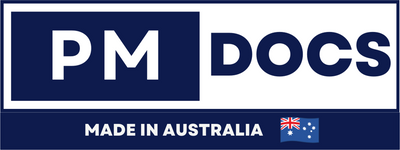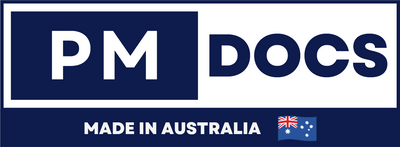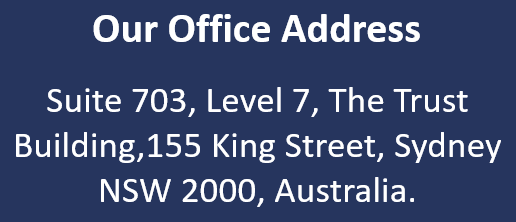Step-By-Step NIST CSF 2.0 Audit Checklist For Australian Organisations
Introduction
In the ever-evolving landscape of cybersecurity, staying ahead of threats is essential. This is particularly true for businesses in Australia, where data protection and compliance are paramount. With the digital transformation accelerating, companies are more interconnected than ever, which increases their vulnerability to cyberattacks. The National Institute of Standards and Technology (NIST) Cybersecurity Framework (CSF) provides a structured approach to managing and reducing cybersecurity risk. Its comprehensive nature makes it suitable for organizations of all sizes and sectors. With the recent update to NIST CSF 2.0, it's crucial to understand how to apply this framework effectively. This guide provides a comprehensive NIST CSF 2.0 audit checklist tailored for the Australian context, helping businesses navigate the intricate world of cybersecurity with confidence.

What Is The NIST CSF?
The NIST Cybersecurity Framework is a set of guidelines and best practices to help organizations manage cybersecurity risks. Since its inception, it has been adopted by various sectors globally due to its flexibility and comprehensive nature. It is widely recognized globally and provides a flexible framework that can be adapted to different industries and countries, including Australia. By offering a common language to address and manage cybersecurity risk, NIST CSF assists organizations in aligning their cybersecurity measures with their business needs.
The framework's adaptability is one of its greatest strengths. It allows organizations to tailor the guidelines to fit their unique requirements, ensuring that cybersecurity measures are not only effective but also sustainable. This adaptability is crucial in a diverse business landscape like Australia's, where industries range from finance and healthcare to agriculture and mining.
Why Is NIST CSF Important For Australian Businesses?
Australian businesses face unique cybersecurity challenges due to strict data protection laws and the increasing sophistication of cyber threats. The country's regulatory environment demands rigorous compliance, and failure to adhere can result in severe penalties. The NIST CSF helps organizations improve their cybersecurity posture by providing a systematic approach to identifying, protecting, detecting, responding to, and recovering from cyber incidents. This proactive stance is essential in minimizing the risk of breaches and the potential damage they can cause.
Moreover, the framework's emphasis on continuous improvement ensures that businesses are always prepared for emerging threats. In an era where cybercriminals are becoming more sophisticated, maintaining a robust cybersecurity posture is not a one-time task but an ongoing process. By integrating NIST CSF into their operations, Australian businesses can enhance their resilience against cyber threats, ensuring business continuity and safeguarding their reputations.
Key Components Of The NIST CSF 2.0
The NIST CSF is organized into five core functions, each critical to a comprehensive cybersecurity strategy. These functions provide a holistic view of an organization's cybersecurity posture, ensuring that all aspects of security are addressed:
-
Identify: Understand your environment to manage cybersecurity risks. This involves gaining a comprehensive understanding of the organizational environment to manage cybersecurity risk effectively. It includes asset management, business environment evaluation, governance, risk assessment, and risk management strategy development.
-
Protect: Implement safeguards to ensure delivery of critical infrastructure services. This function focuses on developing and implementing appropriate safeguards to ensure the delivery of critical services. It encompasses access control, data security, maintenance, and protective technology.
-
Detect: Develop and implement activities to identify the occurrence of a cybersecurity event. Timely discovery of cybersecurity events is crucial. This function involves establishing detection processes and procedures, monitoring anomalies, and implementing continuous monitoring systems.
-
Respond: Take action regarding a detected cybersecurity incident. Once an incident is detected, it's essential to respond effectively to mitigate its impact. This function includes response planning, communication, analysis, mitigation, and improvement.
-
Recover: Maintain plans for resilience and restore services impaired during a cybersecurity incident. Post-incident recovery is vital for minimizing impact. This involves recovery planning, updating strategies based on lessons learned, and ensuring effective communication with stakeholders.
NIST CSF 2.0 Audit Checklist For Australia
1. Identify
-
Asset Management: Inventory all hardware and software assets. Maintaining an updated inventory is crucial for identifying vulnerabilities and ensuring all components are secure. This includes documenting physical and software assets, as well as understanding their roles within the organization.
-
Business Environment: Understand your organization's mission, objectives, and stakeholders. Having a clear understanding of the business environment helps in aligning cybersecurity strategies with organizational goals. It involves identifying key processes, stakeholders, and external dependencies that could impact cybersecurity.
-
Governance: Establish cybersecurity policies and procedures. Governance ensures that there is a structured approach to managing cybersecurity. This includes defining roles and responsibilities, setting security objectives, and establishing accountability frameworks.
-
Risk Assessment: Conduct regular risk assessments to identify potential threats. Regular assessments allow organizations to identify new threats and vulnerabilities, enabling them to adjust their security measures accordingly. This proactive approach is critical for staying ahead of potential cyber threats.
-
Risk Management Strategy: Develop a strategy to manage identified risks. Once risks are identified, a comprehensive strategy should be developed to manage them. This involves prioritizing risks based on their potential impact and implementing measures to mitigate them.
2. Protect
-
Access Control: Implement measures to restrict unauthorized access to systems. Access control is fundamental to ensuring that only authorized individuals have access to sensitive information. This includes implementing strong authentication methods and regularly reviewing access permissions.
-
Data Security: Protect sensitive data with encryption and other security measures. Data security involves safeguarding both data at rest and in transit. Encryption, secure data storage solutions, and robust data handling policies are essential to prevent unauthorized access.
-
Information Protection Processes and Procedures: Develop and maintain security policies and procedures. These processes ensure that security measures are consistently applied across the organization. Regular reviews and updates to these policies are necessary to adapt to changing threats.
-
Maintenance: Ensure systems are maintained and updated regularly. Regular maintenance and updates are crucial to protect systems from vulnerabilities. This includes patch management, system upgrades, and regular security audits.
-
Protective Technology: Use technology solutions to enhance security measures. Leveraging technology such as firewalls, intrusion detection systems, and endpoint protection can significantly enhance an organization's security posture. It's important to stay informed about the latest security technologies and incorporate them into the cybersecurity strategy.
3. Detect
-
Anomalies and Events: Monitor systems for unusual activities. Continuous monitoring of systems helps in quickly identifying anomalies that could indicate a security breach. Implementing automated monitoring tools can enhance detection capabilities.
-
Security Continuous Monitoring: Implement continuous monitoring to detect cybersecurity events. This involves deploying tools and processes that provide real-time visibility into network activities. Regular audits and reviews of monitoring systems ensure their effectiveness.
-
Detection Processes: Establish and maintain detection processes and procedures. Well-defined detection processes enable organizations to respond swiftly to threats. It's important to regularly test and update these processes to ensure they remain effective.
4. Respond
-
Response Planning: Develop and implement incident response plans. A well-structured response plan is essential for minimizing the impact of a security incident. This includes defining roles, responsibilities, and procedures for responding to different types of incidents.
-
Communications: Establish protocols for internal and external communications during incidents. Clear communication is crucial during an incident to ensure that all stakeholders are informed and coordinated. This includes having predefined communication channels and templates.
-
Analysis: Conduct analysis to understand the impact of incidents. Analyzing incidents helps in understanding their root cause and impact. This information is vital for preventing future incidents and improving response strategies.
-
Mitigation: Implement strategies to contain and mitigate incidents. Effective mitigation strategies prevent further damage and help in quickly restoring normal operations. This involves isolating affected systems, removing threats, and applying patches.
-
Improvements: Update response plans based on lessons learned. Post-incident reviews are essential for identifying areas of improvement. Regularly updating response plans ensures that they remain relevant and effective.
5. Recover
-
Recovery Planning: Develop recovery plans to restore capabilities. Recovery plans ensure that organizations can quickly resume operations after an incident. This includes defining recovery objectives, timelines, and procedures.
-
Improvements: Update recovery strategies based on lessons learned. Continuous improvement of recovery strategies helps in enhancing resilience. Lessons learned from incidents should be incorporated into recovery plans to prevent similar occurrences.
-
Communications: Ensure communication with stakeholders during recovery. Keeping stakeholders informed during the recovery process is crucial for maintaining trust. Regular updates on recovery progress and timelines should be communicated clearly.
Tailoring The NIST CSF To Australian Regulations
1. Understanding Local Regulations
Australia has specific data protection laws, such as the Privacy Act 1988, that organizations must comply with. These laws impose strict requirements on how personal information is collected, used, and protected. The NIST CSF can be adapted to meet these local requirements by aligning its principles with Australian laws and regulations. Customizing the framework to incorporate local regulatory requirements ensures that organizations not only enhance their cybersecurity posture but also avoid potential legal pitfalls.
2. Integrating with Other Standards
In addition to NIST CSF, organizations may need to comply with other standards like ISO 27001. These standards provide additional layers of security measures and are often required by industry-specific regulations. Integrating these frameworks can provide a more comprehensive cybersecurity strategy. By combining the strengths of multiple frameworks, organizations can create a robust and resilient security posture that addresses a wide range of threats.
Benefits Of Using The NIST CSF 2.0 Audit Checklist
-
Improved Risk Management: Helps identify and manage cybersecurity risks effectively. By providing a structured approach to risk management, the NIST CSF enables organizations to prioritize threats based on their potential impact. This allows for more efficient allocation of resources towards mitigating the most significant risks.
-
Regulatory Compliance: Assists in meeting Australian data protection regulations. The audit checklist ensures that organizations adhere to both local and international cybersecurity standards. This not only helps in avoiding legal issues but also enhances the organization's reputation as a trustworthy entity.
-
Enhanced Communication: Facilitates better communication between IT and management. The framework provides a common language for discussing cybersecurity issues, making it easier for IT teams to communicate risks and strategies to management. This alignment ensures that cybersecurity measures are in line with business objectives.
-
Proactive Security Posture: Encourages a proactive approach to cybersecurity. By focusing on prevention and continuous improvement, the NIST CSF helps organizations stay ahead of potential threats. This proactive stance is crucial for minimizing the impact of cyber incidents and ensuring business continuity.
Conclusion
The NIST CSF 2.0 provides a robust framework for managing cybersecurity risks, and tailoring it to the Australian context ensures compliance with local regulations. By following this audit checklist, organizations can strengthen their cybersecurity posture, protect sensitive data, and maintain trust with stakeholders. The framework's comprehensive nature allows for a tailored approach that meets specific organizational needs while ensuring regulatory compliance.




